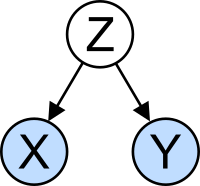Misuse

Misuse of statistics can produce subtle but serious errors in description and interpretation—subtle in the sense that even experienced professionals make such errors, and serious in the sense that they can lead to devastating decision errors. For instance, social policy, medical practice, and the reliability of structures like bridges all rely on the proper use of statistics.
Even when statistical techniques are correctly applied, the results can be difficult to interpret for those lacking expertise. The statistical significance of a trend in the data—which measures the extent to which a trend could be caused by random variation in the sample—may or may not agree with an intuitive sense of its significance. The set of basic statistical skills (and skepticism) that people need to deal with information in their everyday lives properly is referred to as statistical literacy.
There is a general perception that statistical knowledge is all-too-frequently intentionally misused by finding ways to interpret only the data that are favorable to the presenter. A mistrust and misunderstanding of statistics is associated with the quotation, "There are three kinds of lies: lies, damned lies, and statistics". Misuse of statistics can be both inadvertent and intentional, and the book How to Lie with Statistics outlines a range of considerations. In an attempt to shed light on the use and misuse of statistics, reviews of statistical techniques used in particular fields are conducted (e.g. Warne, Lazo, Ramos, and Ritter (2012)).
Ways to avoid misuse of statistics include using proper diagrams and avoiding bias. Misuse can occur when conclusions are overgeneralized and claimed to be representative of more than they really are, often by either deliberately or unconsciously overlooking sampling bias. Bar graphs are arguably the easiest diagrams to use and understand, and they can be made either by hand or with simple computer programs. Unfortunately, most people do not look for bias or errors, so they are not noticed. Thus, people may often believe that something is true even if it is not well represented. To make data gathered from statistics believable and accurate, the sample taken must be representative of the whole. According to Huff, "The dependability of a sample can be destroyed by bias... allow yourself some degree of skepticism."
To assist in the understanding of statistics Huff proposed a series of questions to be asked in each case:
- Who says so? (Does he/she have an axe to grind?)
- How does he/she know? (Does he/she have the resources to know the facts?)
- What's missing? (Does he/she give us a complete picture?)
- Did someone change the subject? (Does he/she offer us the right answer to the wrong problem?)
- Does it make sense? (Is his/her conclusion logical and consistent with what we already know?)
Misinterpretation: correlationedit
The concept of correlation is particularly noteworthy for the potential confusion it can cause. Statistical analysis of a data set often reveals that two variables (properties) of the population under consideration tend to vary together, as if they were connected. For example, a study of annual income that also looks at age of death might find that poor people tend to have shorter lives than affluent people. The two variables are said to be correlated; however, they may or may not be the cause of one another. The correlation phenomena could be caused by a third, previously unconsidered phenomenon, called a lurking variable or confounding variable. For this reason, there is no way to immediately infer the existence of a causal relationship between the two variables.
Comments
Post a Comment